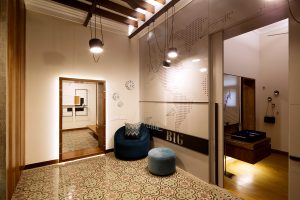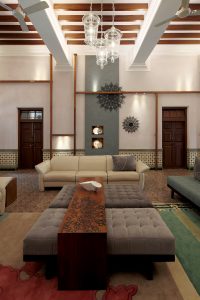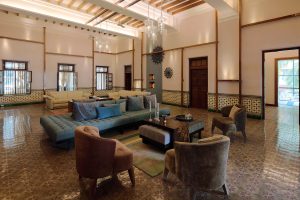

Ar. Lumina Phylis Cleetus, the chief architect of one of the most well-known studios in Bengaluru, Fulcrum Studio is as practical as spontaneous. She’s a beautiful culmination of the best of both worlds of architecture and literature; a trait that is abundantly displayed in hers works. In an interview with Cindrebay, this Kerala-born architect speaks about her experiences, and love for Khalil Gibran.
Before we begin talking about your fascinating journey as an architecture, tell us something about your childhood.
I was born in 1982 in Kerala. And, growing up in Kerala means a certain amount of potery entwines itself in our lives. Also, my mother, a nature lover encouraged us to draw and make things by hand; this allowed sketching to be an integral part of our everyday lives.
After school, I went on to study architecture in the year 2000 at the BMS College of Engineering, Bangalore. In spite of working for over a decade, I still crave for a Masters’ degree.

When did you start your practice? How has the journey been like?
I got the opportunity to join a three- member team at Fulcrum Studio, Bangalore in 2005. That is where I was introduced to architecture and the language that dictates it. I realised there’s a lot of design wherever you go, and that learning stems from observing and reading. And after a decade now, I feel that architecture is completely integrated in me-the architect. As a consequence, I never viewed work and life or work and vacation as two separate entities. They all belong to the same continuum of life for me. I still feel that I am an amateur, a beginner and that learning still happens everyday.
What is your design philosophy?
According to me, Design cannot be theoretical, calculated or intellectual. The spaces are to evoke a sense of emotional bliss. Binding every bit to nature as much as possible letting the present be influenced by the past to create a future.

How would you define your signature style?
The German American architect Ludwig Mies van der Rohe had once said, “God is in the details”. I try and observe and register everything around me, and that has enabled me to develop an unlabelled, distinct style.
What challenges yet keeps you motivated?
The need to keep my designs simple yet complex at the same time. I think it is interesting to create a dual character in design. This dual characterisation of design is extremely challenging, and this keeps me motivated to push myself to attain that duality.

What has been your toughest project so far and why?
Conserving an old 1932 bungalow was a tough experience as the structure was very old. The I-beams that had the etching ‘ made in Worcestershire’ boldly spanned the roof needed to handled carefully. The bungalow had beautiful wooden rafters and Spanish tiles that needed special attention. Allowing modernity to blend in while preserving the elegance of the time gone by, was a beautiful process. The abandoned first floor of the home was re-done with utmost care while retaining the old motifs.

Who / what inspires you & your works?
In my opinion, inspiration is everywhere, we just need to see it. Luis Barragan, Carlo Scapa, Tadao Ando, Kengo Kuma are a few architects whose works still intrigue me. And, I often find myself wondering, how could they do what they did?
I often find inspiration in Kahlil Gibran’s poetry as well– Art arises when the secret vision of the artist and the manifestation of nature agree to find new shapes.
How do you weave in environmental sustainability into your projects?
Apart from reading on it, i haven’t been blessed with a project of this kind. However, considering that we are living in the age of massive consumption, reusing scrap is the most important way forward. And this is definitely an important and exciting challenge for young designers.

How would you like the world to recognize you?
I am not sure how I would want the world to recognise me. Currently, I do not follow an established pattern or any kind of established style. I try that every design becomes a unique work leaning only on some factors, related to my interests and the research line that I would be following at the moment.
Most of it depends on external factors such as place, cultural environment, and client. The continuity of my work comes from my attitude towards it and some constants like:balance, harmony, timelessness, atmosphere, serenity, universality and contextualization. The combination of these concepts together with inherent and external factors generates the spirit of each project.

Muted colours , vivid motifs, plush textures and varied patterns have worked so well together in the living room..A beautifully composed space!!!